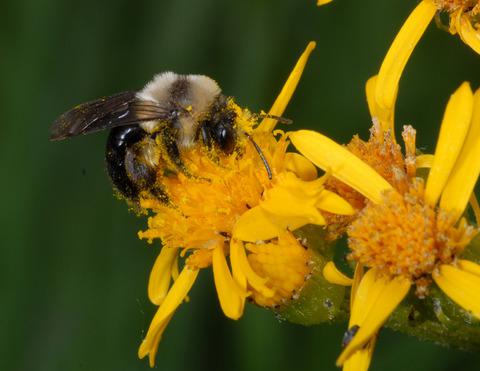当前位置:
X-MOL 学术
›
Ecol. Lett.
›
论文详情
Our official English website, www.x-mol.net, welcomes your feedback! (Note: you will need to create a separate account there.)
Bee phenology is predicted by climatic variation and functional traits.
Ecology Letters ( IF 8.8 ) Pub Date : 2020-08-19 , DOI: 10.1111/ele.13583 Michael Stemkovski 1, 2 , William D Pearse 1, 3 , Sean R Griffin 2, 4 , Gabriella L Pardee 2, 4 , Jason Gibbs 5 , Terry Griswold 6 , John L Neff 7 , Ryan Oram 8 , Molly G Rightmyer 9 , Cory S Sheffield 8 , Karen Wright 10 , Brian D Inouye 2, 11 , David W Inouye 2, 12 , Rebecca E Irwin 2, 13
Ecology Letters ( IF 8.8 ) Pub Date : 2020-08-19 , DOI: 10.1111/ele.13583 Michael Stemkovski 1, 2 , William D Pearse 1, 3 , Sean R Griffin 2, 4 , Gabriella L Pardee 2, 4 , Jason Gibbs 5 , Terry Griswold 6 , John L Neff 7 , Ryan Oram 8 , Molly G Rightmyer 9 , Cory S Sheffield 8 , Karen Wright 10 , Brian D Inouye 2, 11 , David W Inouye 2, 12 , Rebecca E Irwin 2, 13
Affiliation

|
Climate change is shifting the environmental cues that determine the phenology of interacting species. Plant–pollinator systems may be susceptible to temporal mismatch if bees and flowering plants differ in their phenological responses to warming temperatures. While the cues that trigger flowering are well‐understood, little is known about what determines bee phenology. Using generalised additive models, we analyzed time‐series data representing 67 bee species collected over 9 years in the Colorado Rocky Mountains to perform the first community‐wide quantification of the drivers of bee phenology. Bee emergence was sensitive to climatic variation, advancing with earlier snowmelt timing, whereas later phenophases were best explained by functional traits including overwintering stage and nest location. Comparison of these findings to a long‐term flower study showed that bee phenology is less sensitive than flower phenology to climatic variation, indicating potential for reduced synchrony of flowers and pollinators under climate change.
中文翻译:

蜜蜂物候是通过气候变化和功能性状来预测的。
气候变化正在改变决定相互作用物种物候的环境线索。如果蜜蜂和开花植物对变暖温度的物候响应有所不同,则植物-授粉系统可能易受时间错配的影响。尽管触发开花的线索已被很好地理解,但对于决定蜂物候的因素知之甚少。使用广义加性模型,我们分析了代表科罗拉多洛矶山脉在9年中收集的67种蜂种的时间序列数据,从而对蜂类物候发生的驱动力进行了首次社区范围的量化。蜜蜂的出现对气候变化敏感,并随着融雪时间的提前而提前,而后期的物候期最好用包括越冬期和巢位在内的功能性状来解释。
更新日期:2020-10-19
中文翻译:

蜜蜂物候是通过气候变化和功能性状来预测的。
气候变化正在改变决定相互作用物种物候的环境线索。如果蜜蜂和开花植物对变暖温度的物候响应有所不同,则植物-授粉系统可能易受时间错配的影响。尽管触发开花的线索已被很好地理解,但对于决定蜂物候的因素知之甚少。使用广义加性模型,我们分析了代表科罗拉多洛矶山脉在9年中收集的67种蜂种的时间序列数据,从而对蜂类物候发生的驱动力进行了首次社区范围的量化。蜜蜂的出现对气候变化敏感,并随着融雪时间的提前而提前,而后期的物候期最好用包括越冬期和巢位在内的功能性状来解释。



























 京公网安备 11010802027423号
京公网安备 11010802027423号